A Track-by-Track Breakdown with Todd Sucherman
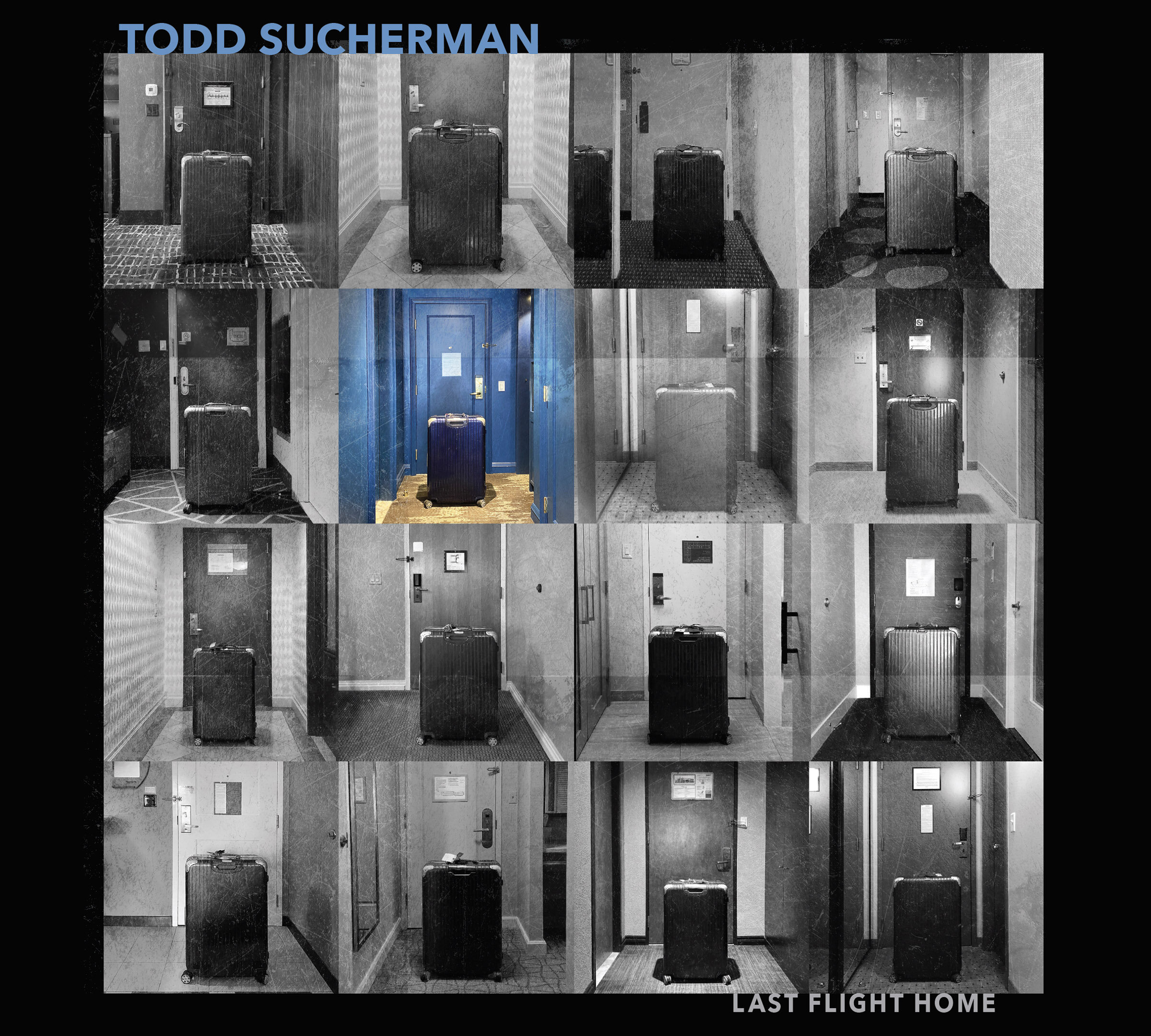
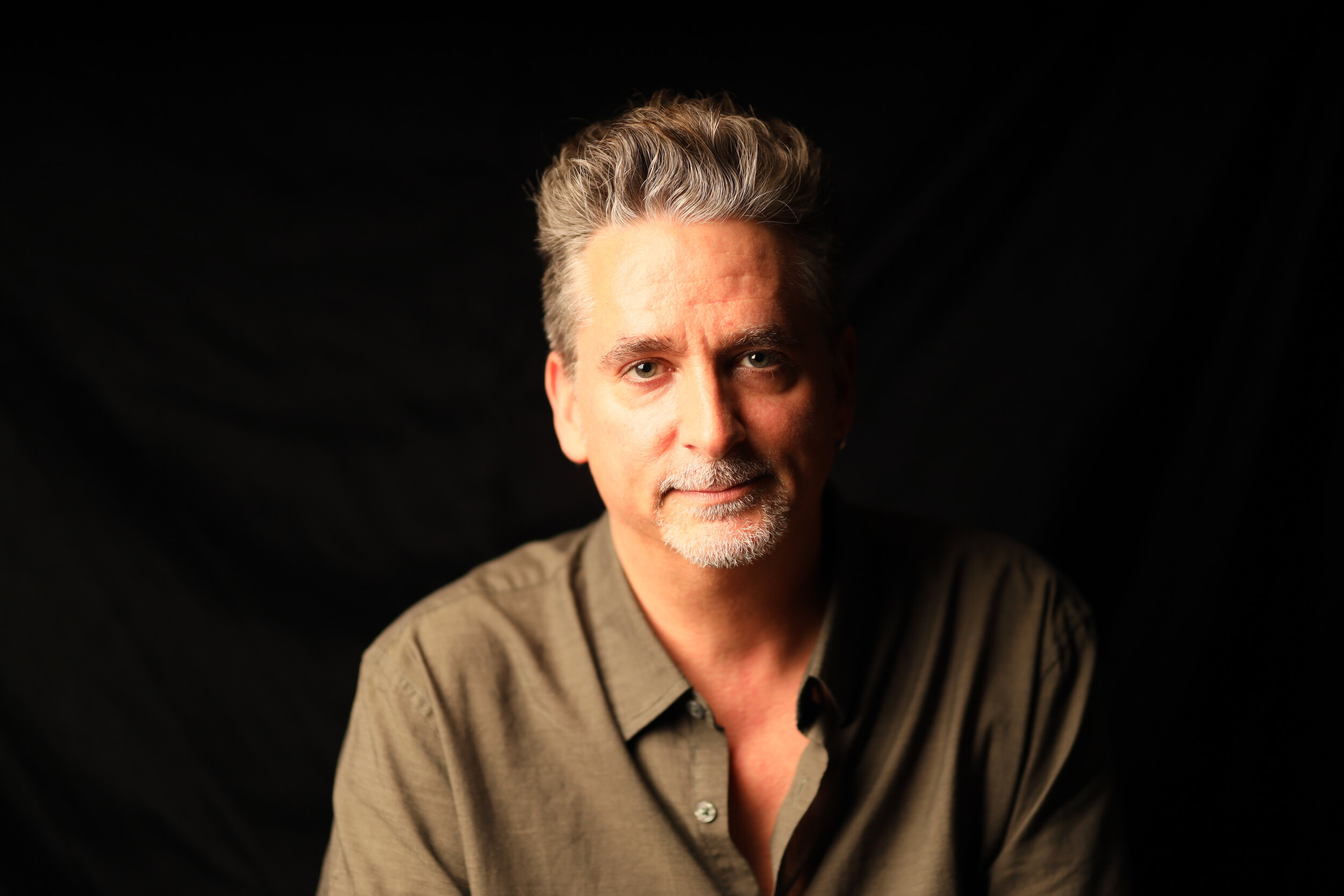
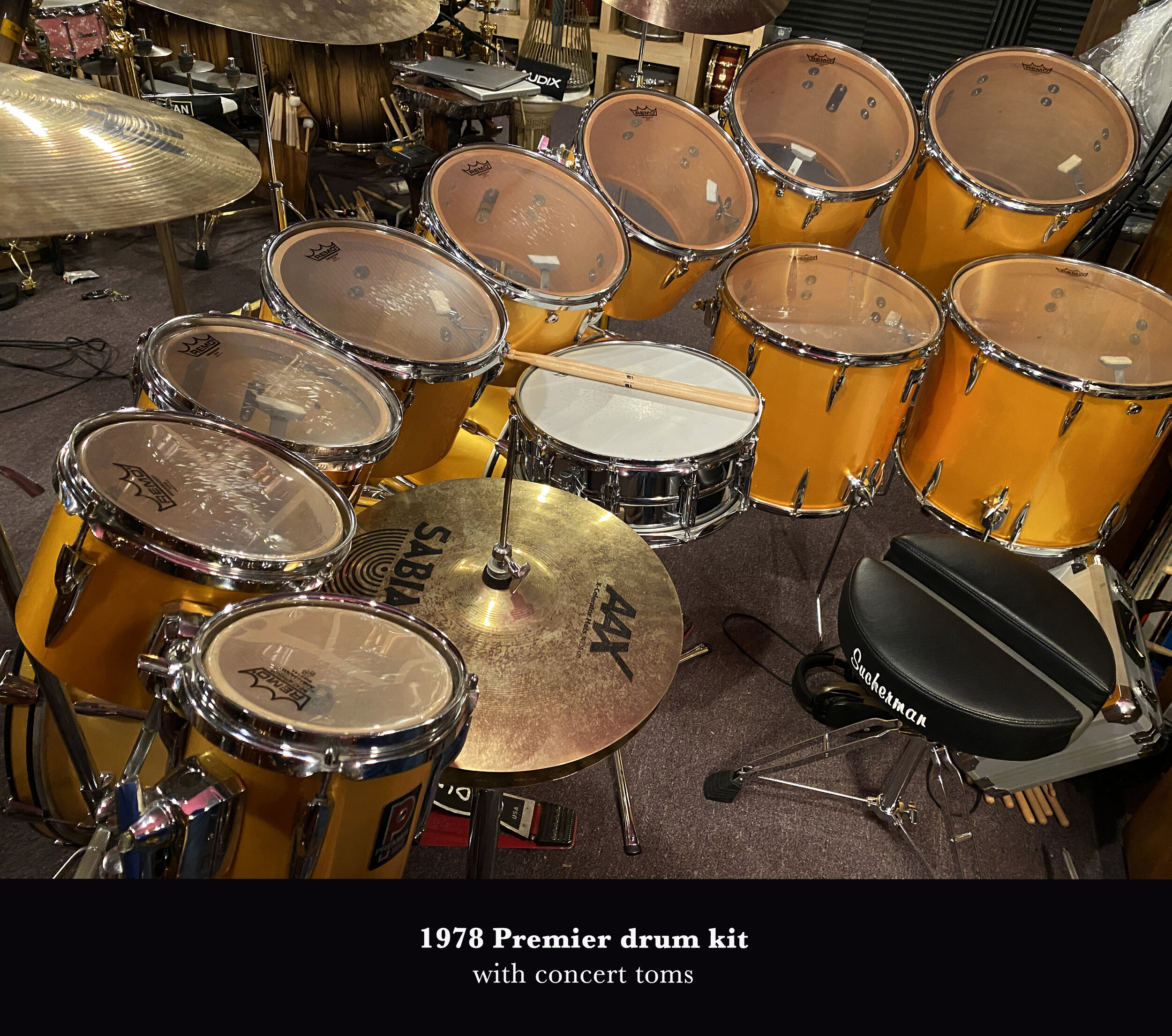
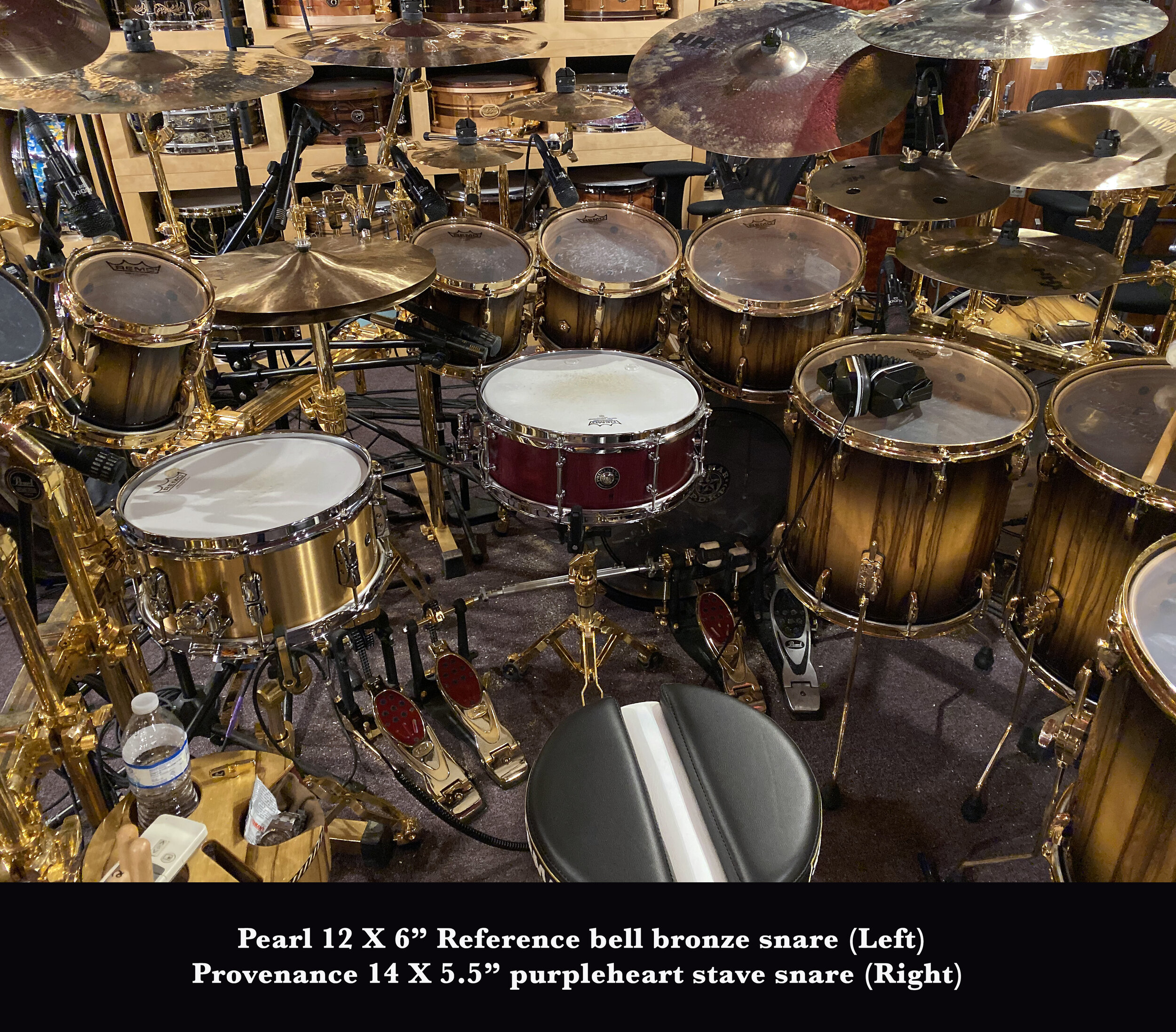
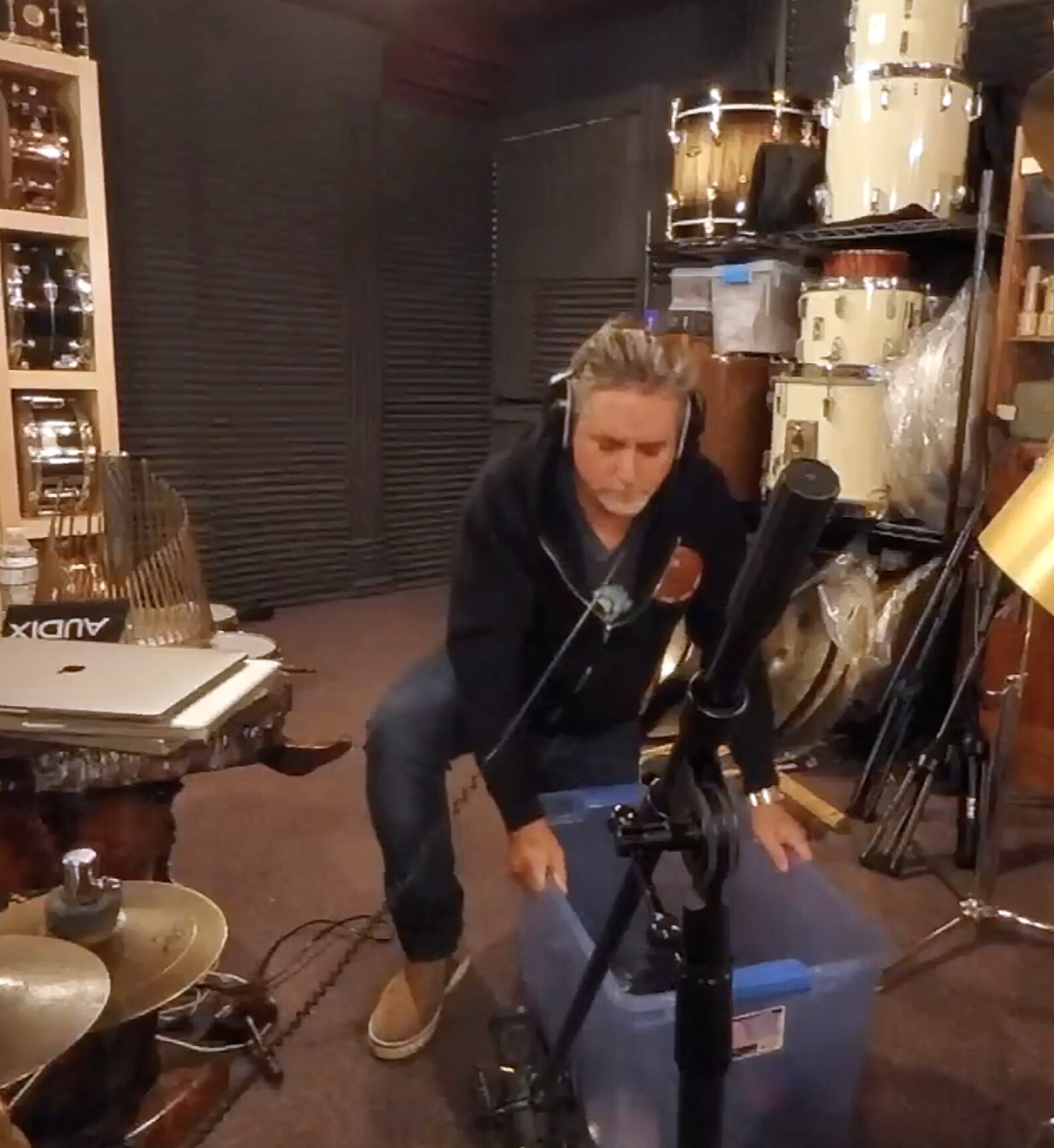

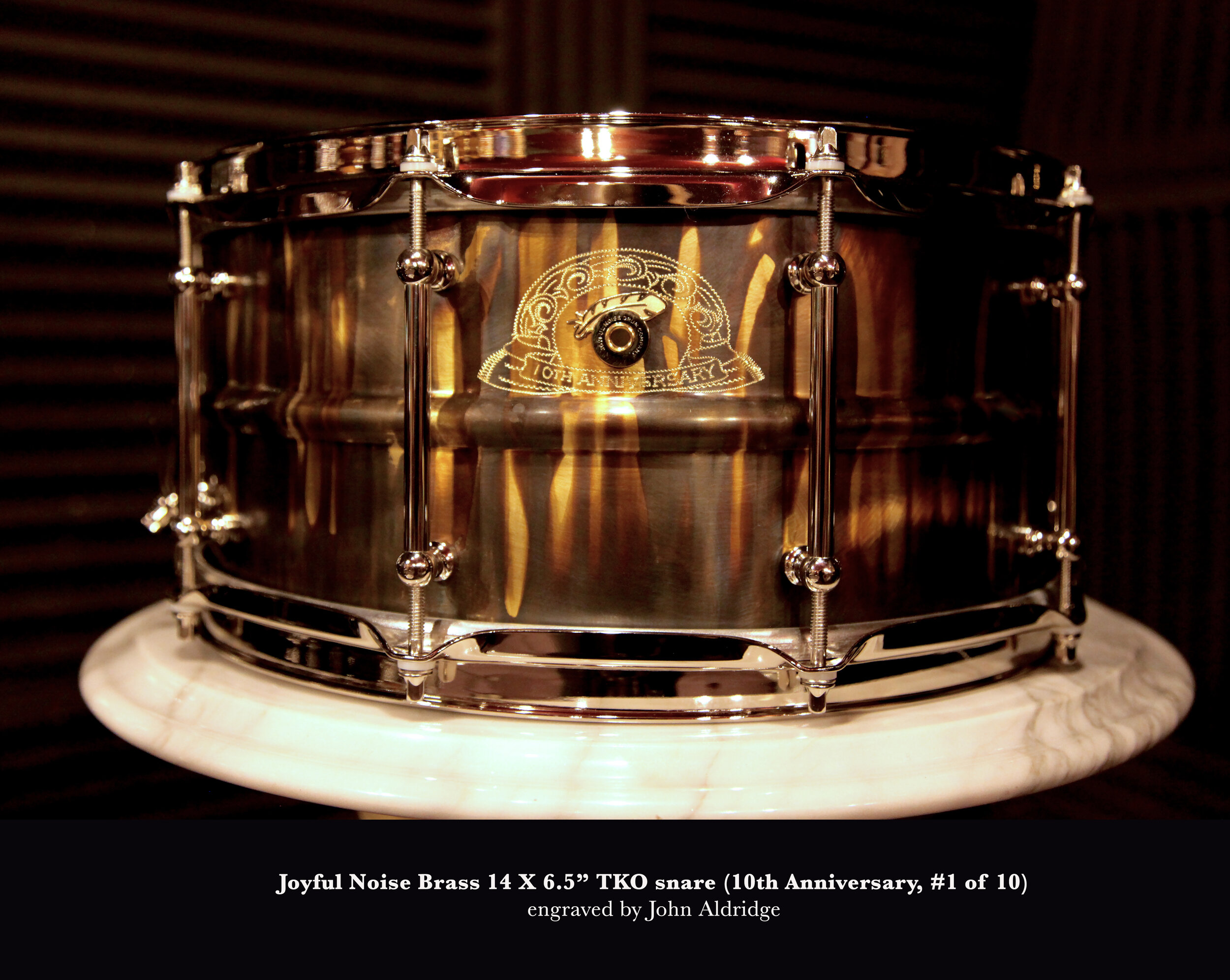
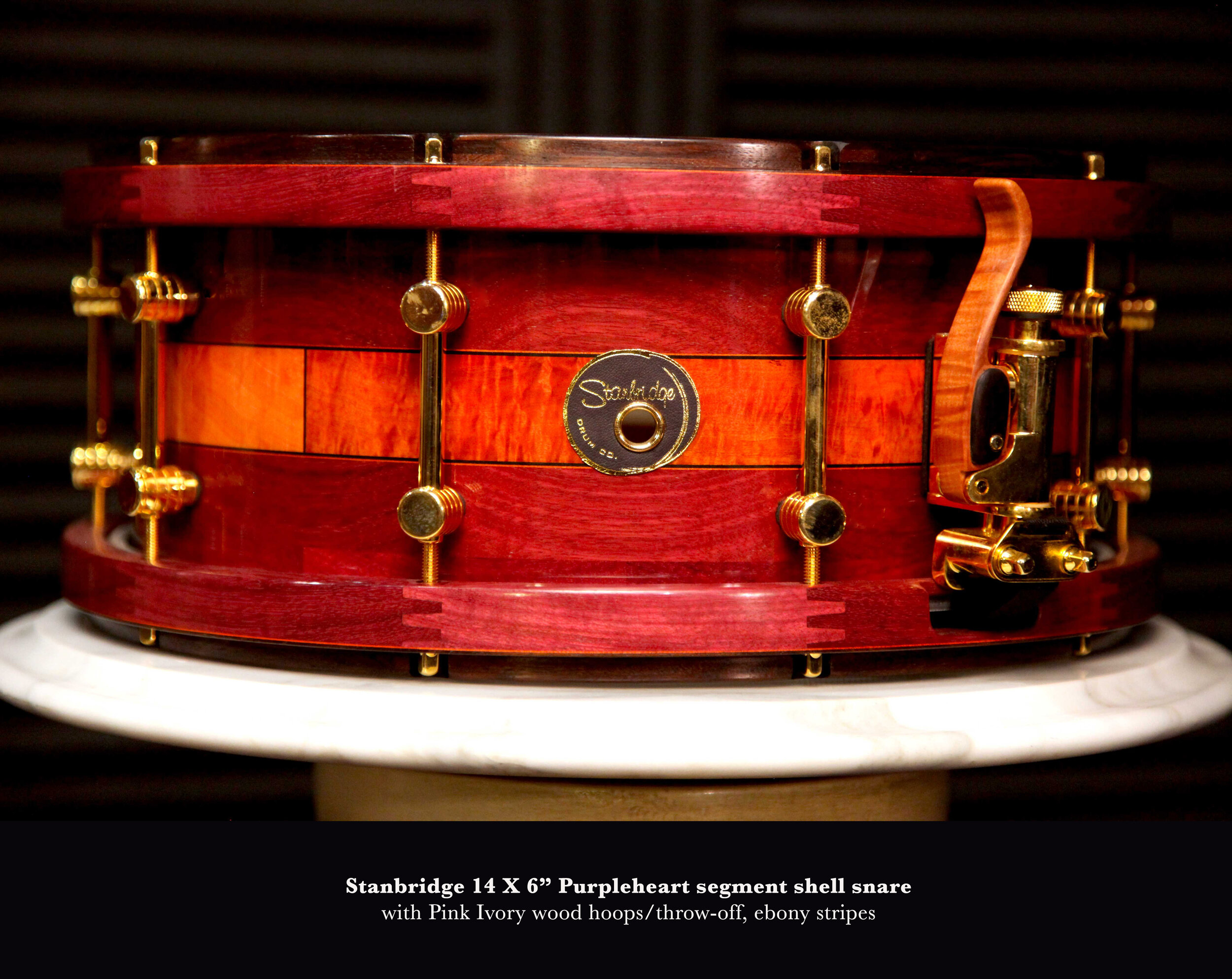

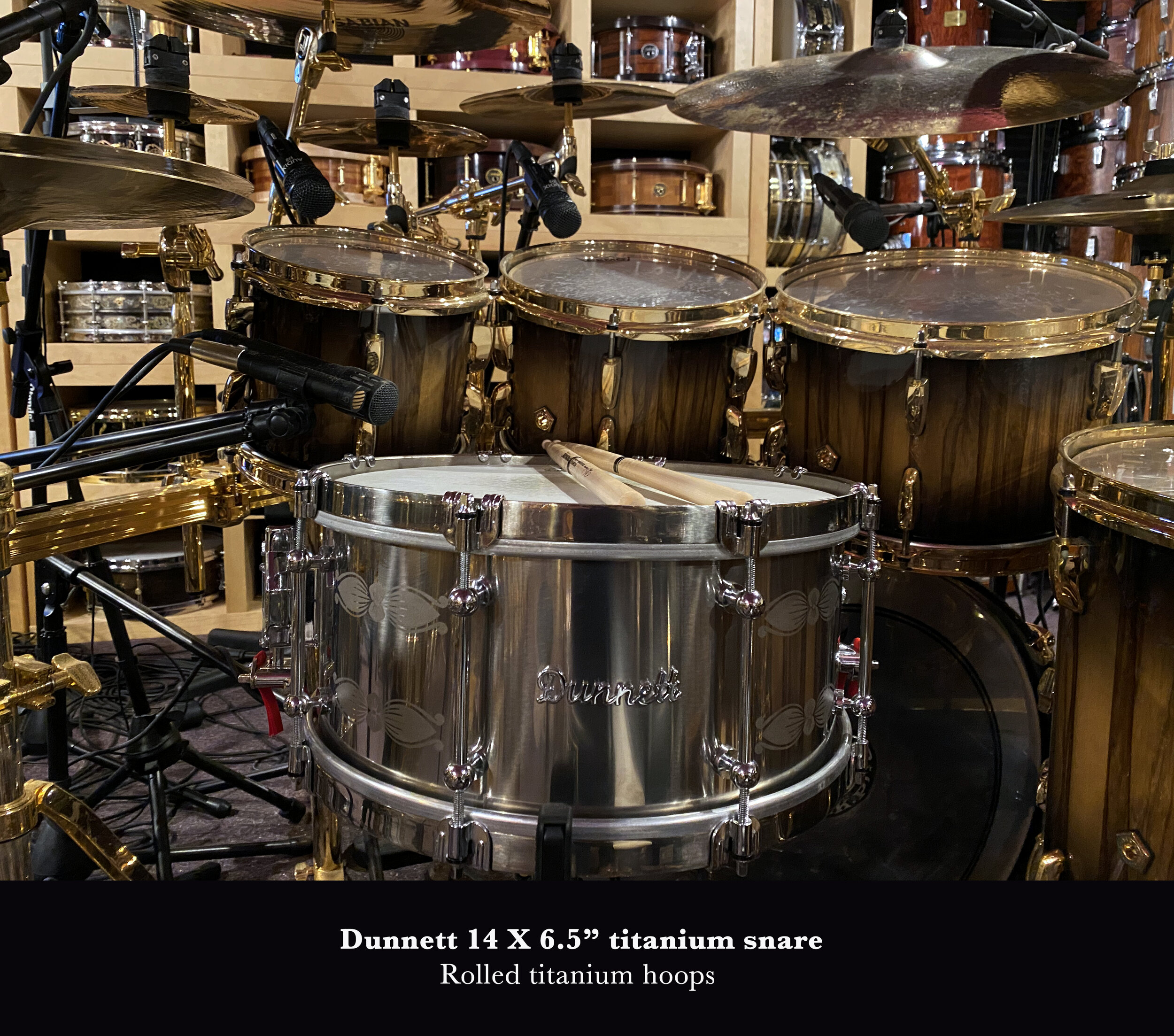
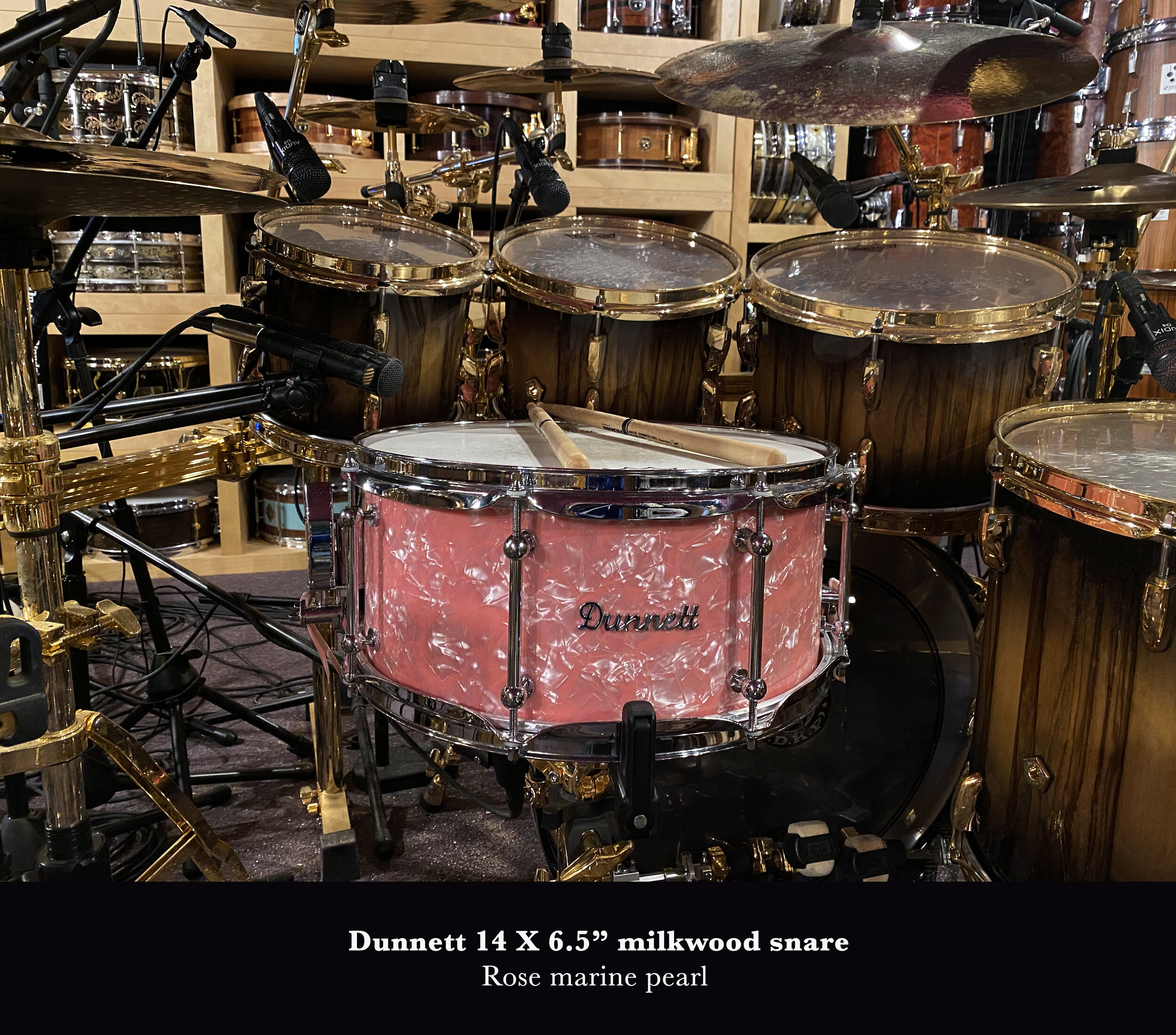

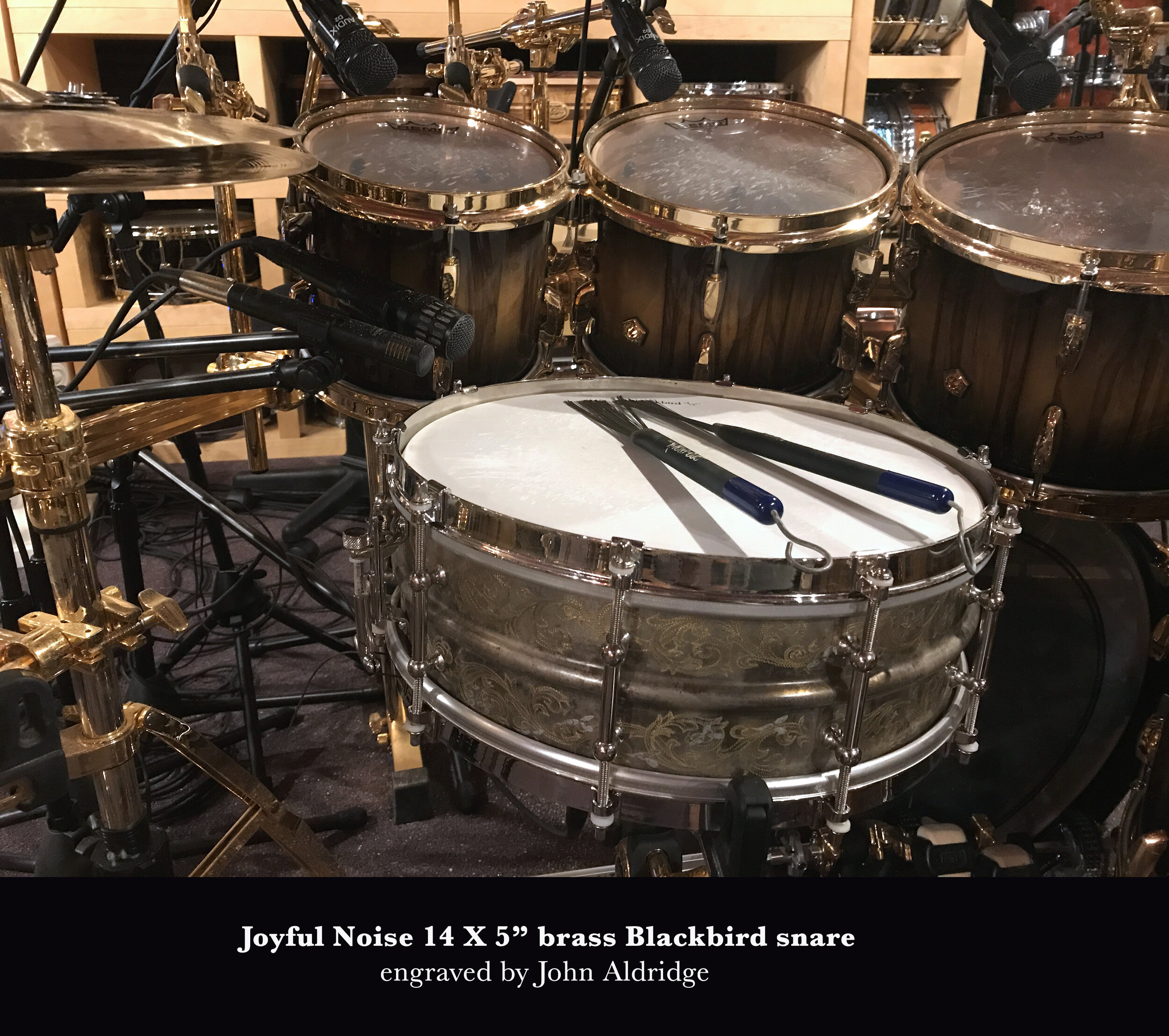
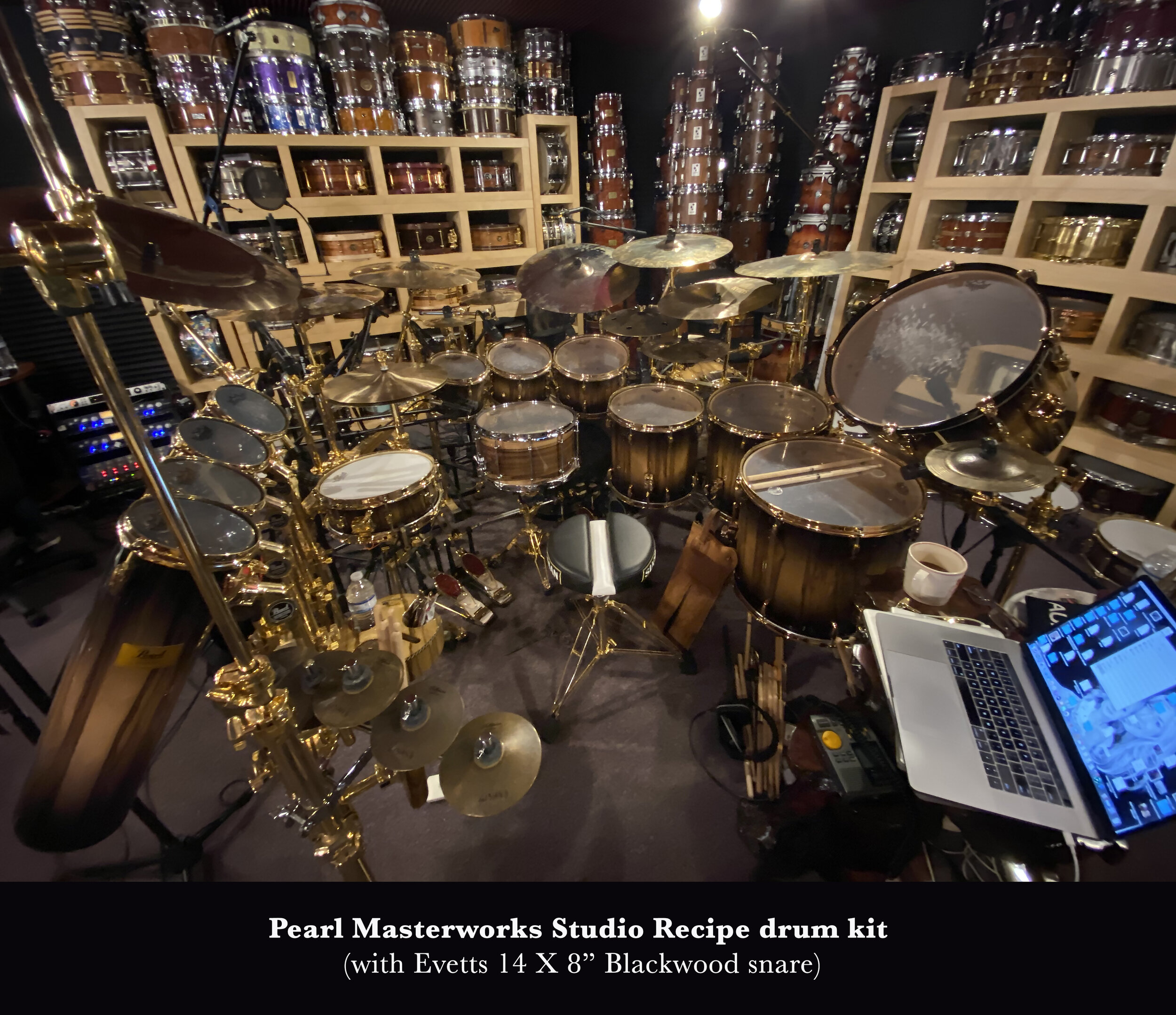
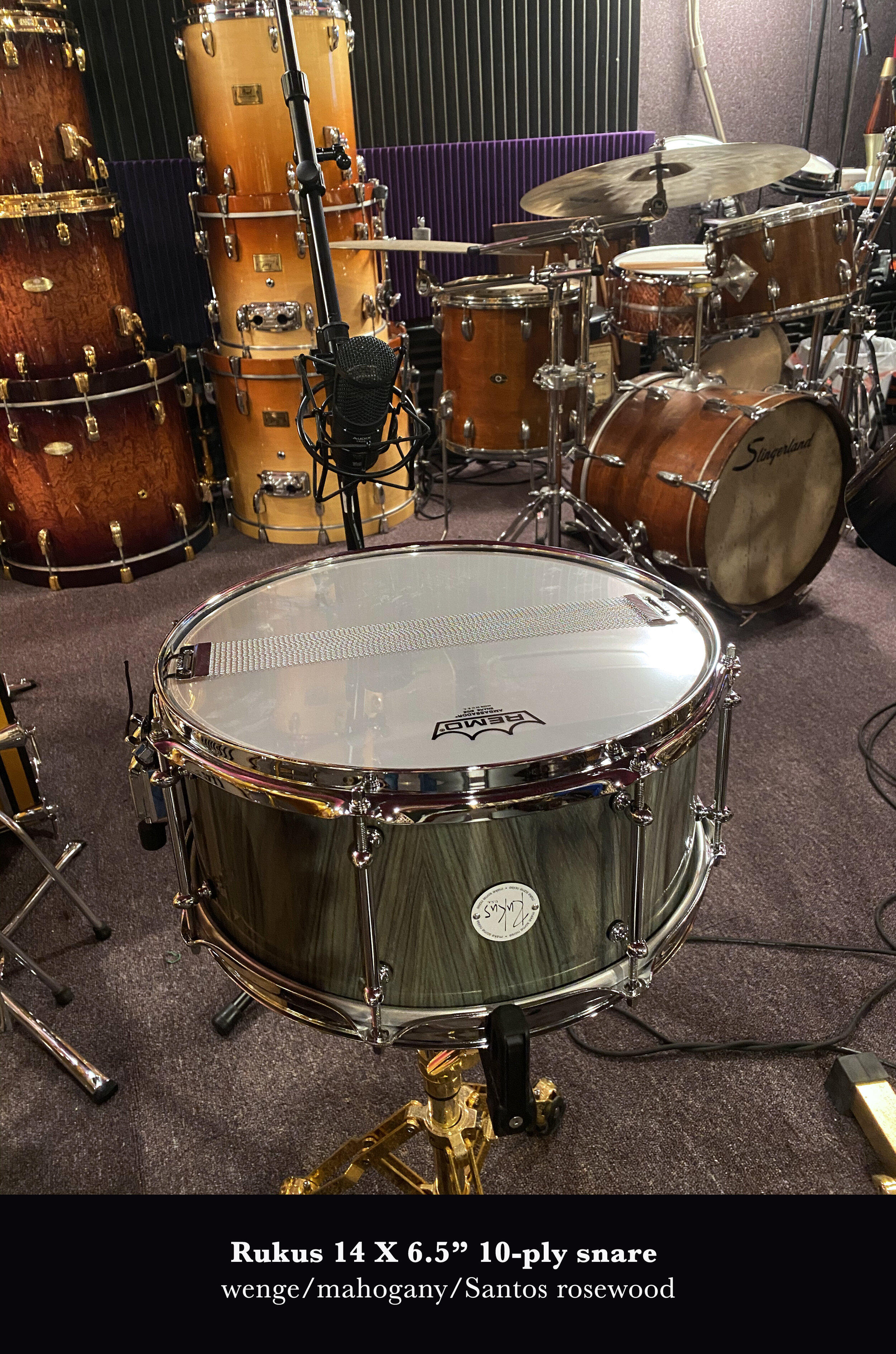
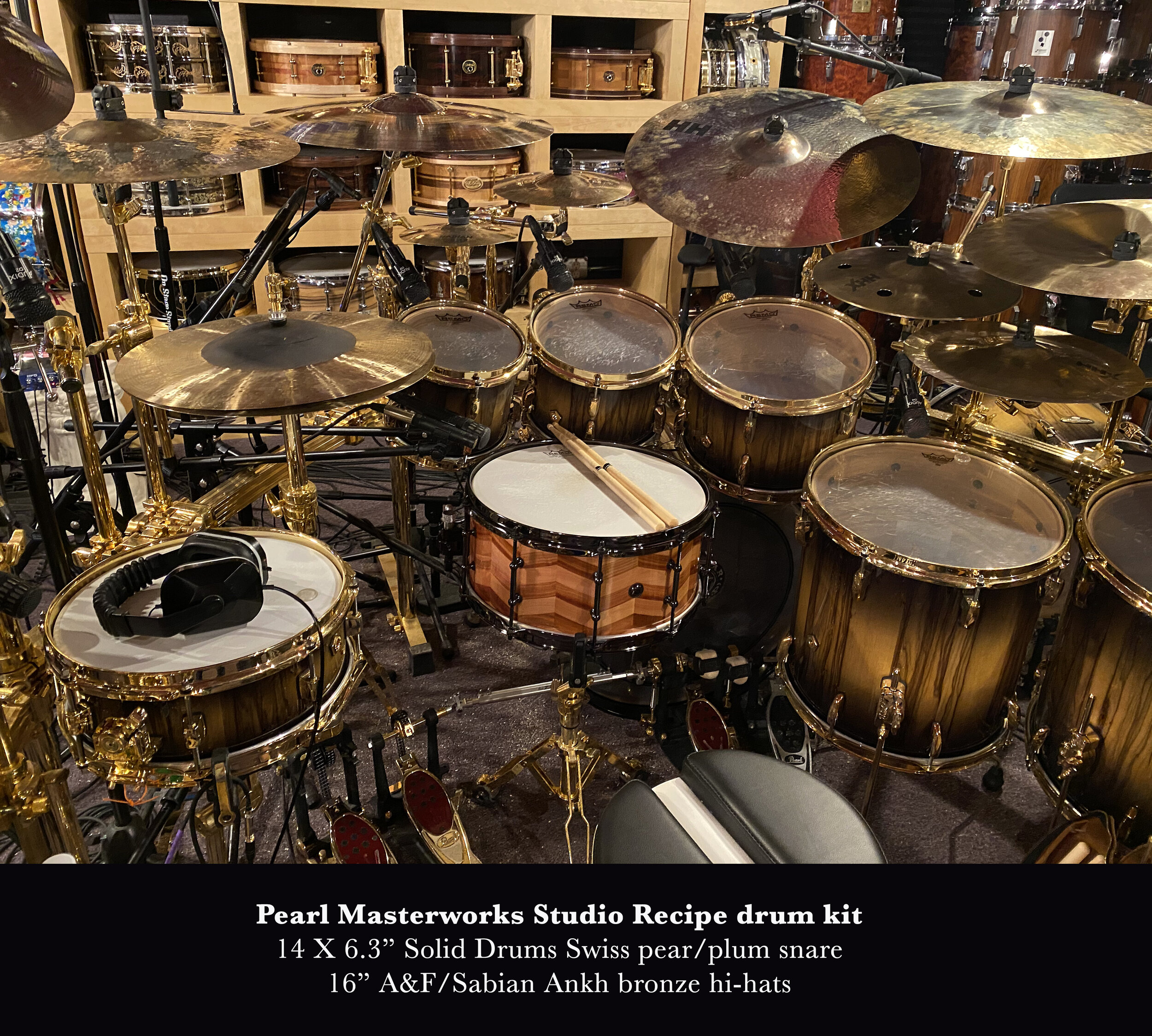
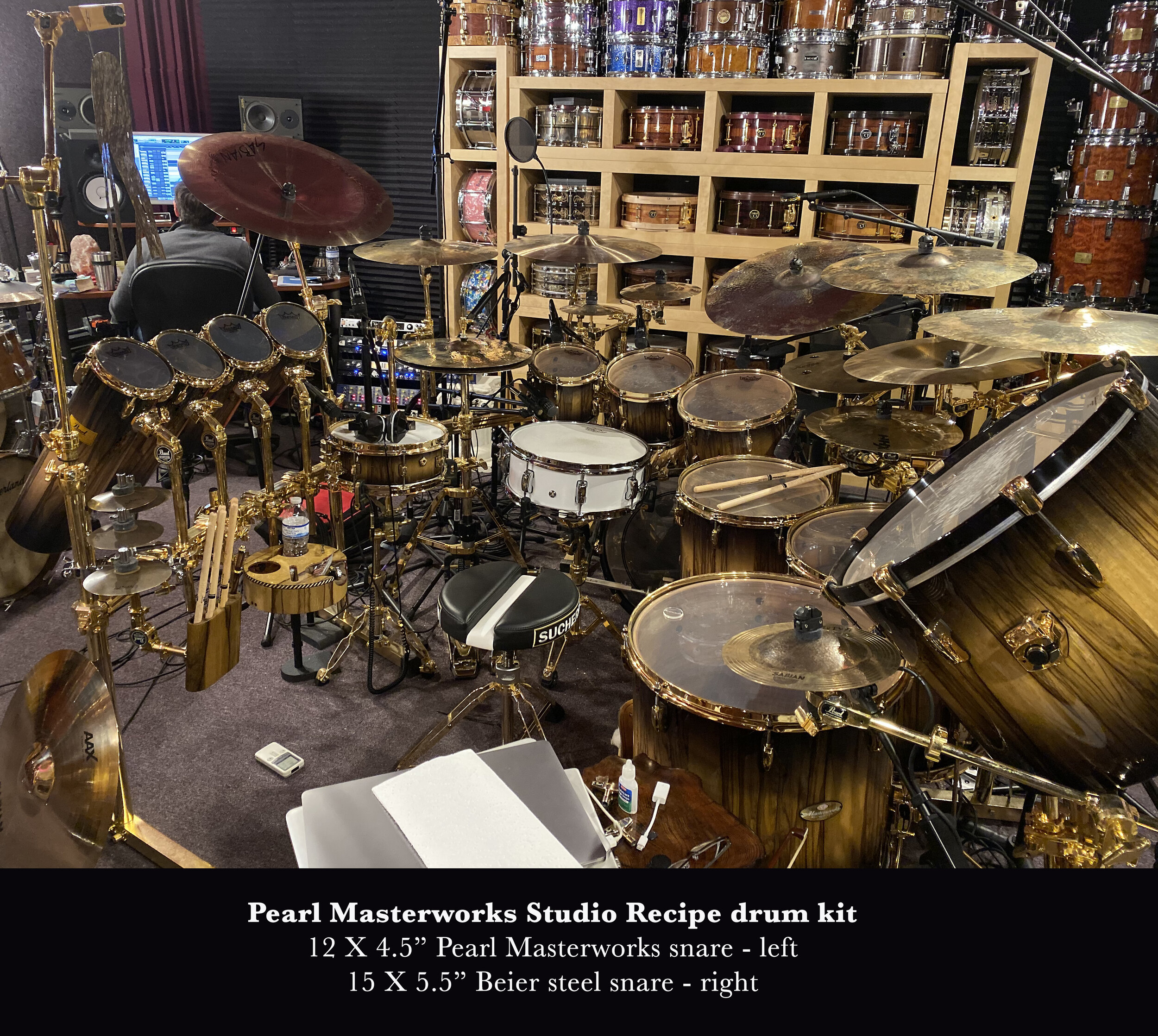

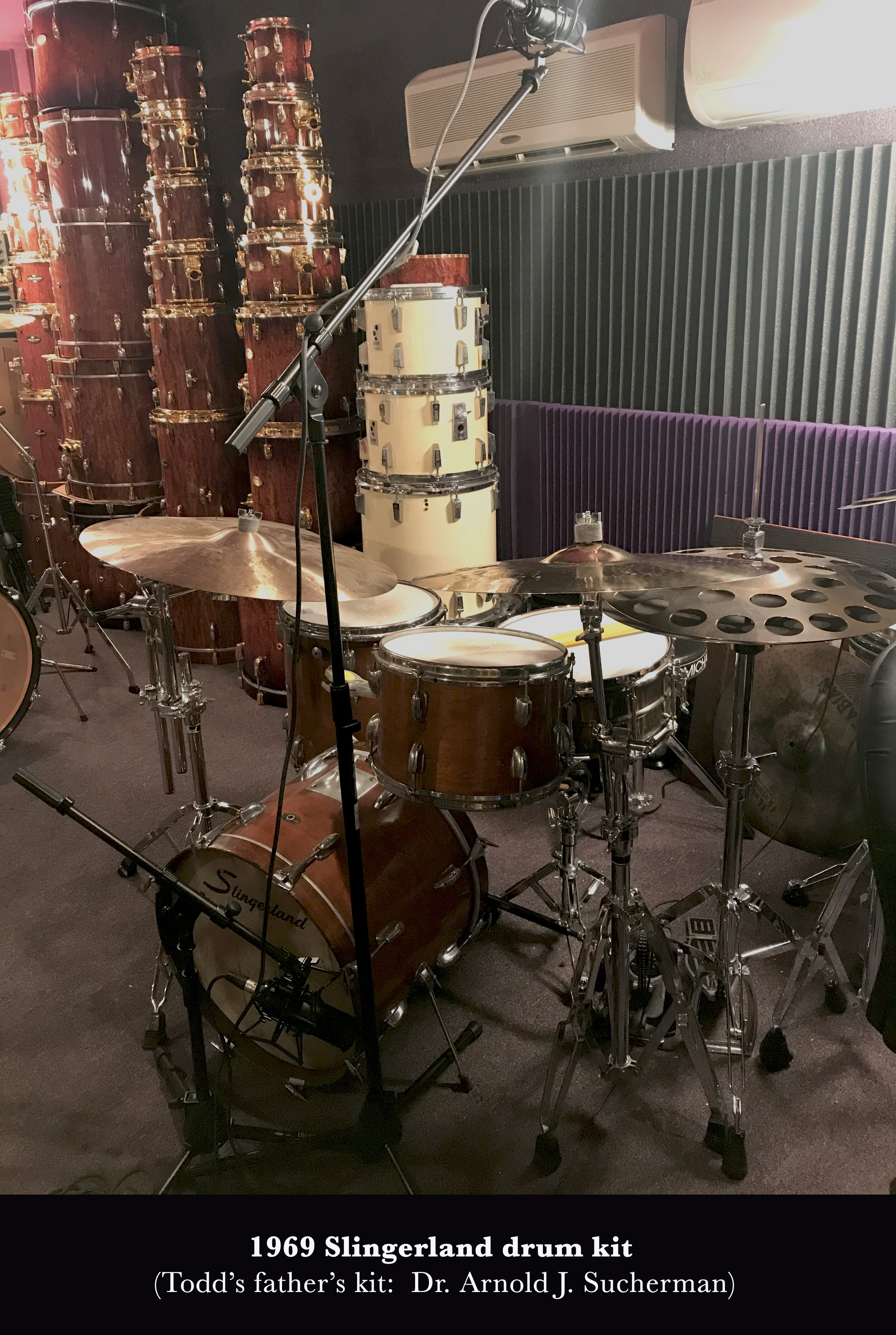


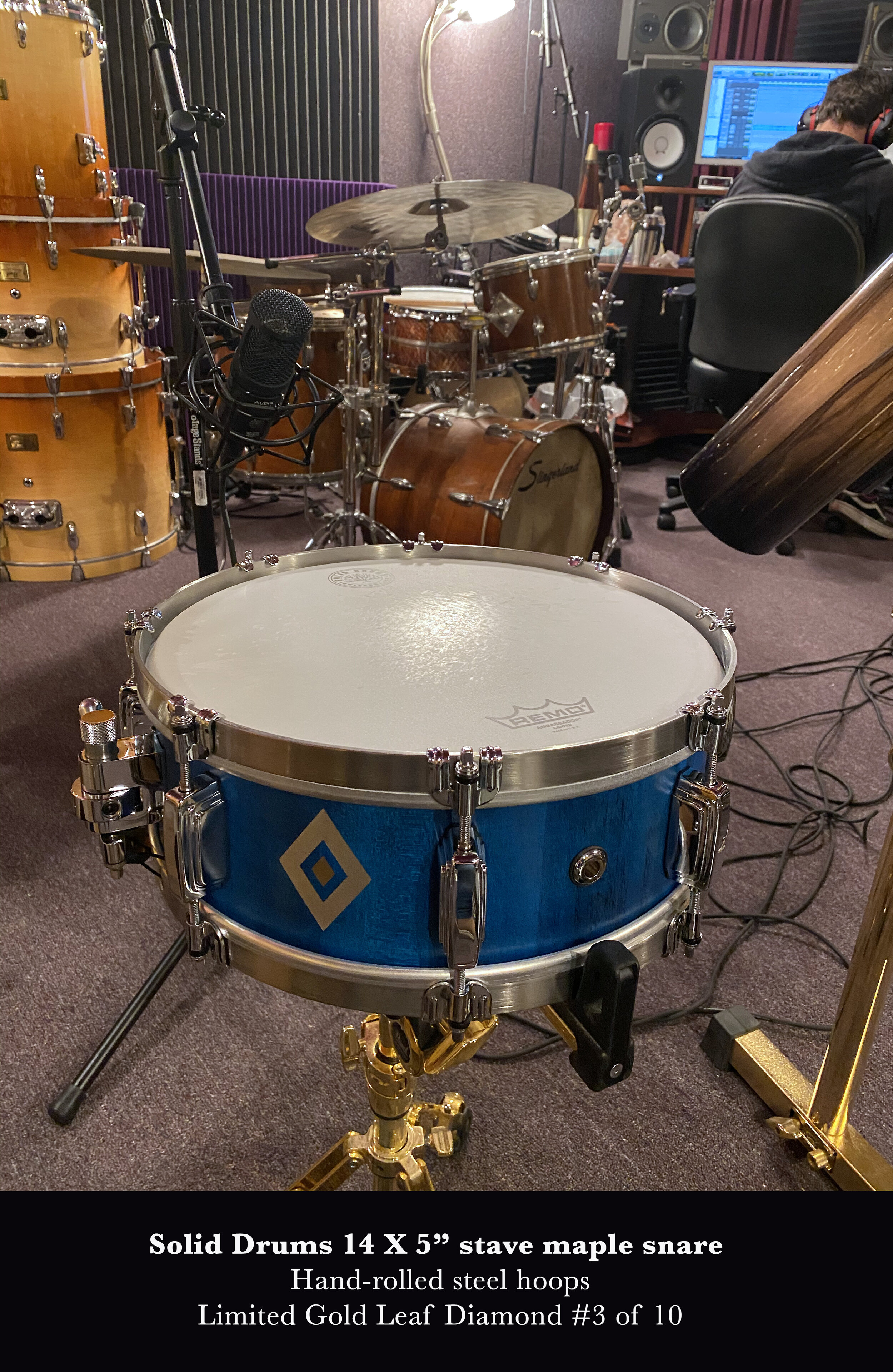





It is truly hard to contain my excitement over Todd Sucherman’s new album, ‘Last Flight Home’. I’ve anxiously awaited my copy of the CD and since its arrival, I’ve been playing it on my CD player, my iPhone, and on my Mac. It’s really that good.
For those of you who may not know Todd (is that possible?), he has anchored the rhythm of the band Styx for over two decades. Over the years, he has also played with notable bands/artists such as Brian Wilson, Peter Cetera, The Falling Wallendas, and even Spinal Tap! He has also manned the drums behind Lawrence Gowan (Styx keyboardist, vocals) on his Gowan solo tours. In addition to recording and touring, Todd takes the time to reach out to his fellow drummers to share his immense wealth of drum knowledge live at various clinic,s master classes, and more recently online, partnered with Drumeo. Todd’s award-winning Methods and Mechanics I & II DVD’s are essential for every drummer’s library. Todd is truly one of the most talented and well-recognized drummers out there today. He is also one of the most friendly, kind, funny, and compassionate “rock stars” you may ever meet. Todd’s incredible snare arsenal/collection is also quite “drool-worthy” and can be seen on the WWW site: http://www.toddsucherman.com/snare-gallery/.
On May 2, 2020 (Todd’s birthday), Todd took his career one step further and released his first solo album, “Last Flight Home”. This project took about 8 months to complete (July, 2019 – Feb, 2020), in between all the touring, clinics, and traveling. The album is not a flurry of prog rock drum tracks as one might expect but passionate and varied pieces composed by Todd and his creative partner, J.K. Harrison, with Todd on lead vocals. There are 10 great tunes, carefully sculpted and crafted to tease our emotions and draw us in. This phenomenal debut album is available on CDs, high-definition audio (.WAV), and signed and numbered 180-gram vinyl LP’s: http://www.toddsucherman.com/store/.
I spoke with Todd recently to get some insights on the creation of the album. There’s lot of juicy tidbits about the lyrics, song construction, and gear. Enjoy!
BC: You had some concerns about releasing the album (pre-orders were taken on April 14th) during the COVID-19 crisis. How did you decide on going ahead?
TS: “The record was mixed, mastered, manufactured, and sent to the house – then COVID-19 hit. My first thought was, ‘I can’t release a record during a global pandemic and economic crisis. I’m just going to hold off.’ As time passed, my musician friends were saying, ‘Hey, you’ve got this ready to go. People have time to listen to music now, maybe more than they ever have.’ My wife, Taylor, originally was onboard with delaying the release but over time began to change her mind. I remember reading somewhere that, if you had music now, release it because someone who might be here now to listen might not be here later to hear it. I was still largely conflicted, so I went to my social media channels and posed the question, ‘I have this record. Would you be interested in new music at this time? Should I wait for brighter days or go full speed ahead?’ The response was 99.9% overwhelmingly yes, release it now. I moved the release date from May 30 to May 2 with no plan and just went for it. It kept me busy and positively focused for the last several weeks.”
BC: Last Flight Home was released in multiple formats, including high-definition digital and old school vinyl LP formats. How did you decide on that?
TS: “I had seen a couple other artists offer high resolution .wav files. I thought this was a nice option because it would never sound better than that as far as quality and it was easy to send (a downloadable email). In recent years, many friends of mine and Tommy Shaw have caught the vinyl bug.
Taylor and I went to a party right before Teagan was born (2014). It was a musician friend’s place and his studio was on one side and the other half of it was like someone’s basement that you went to in Freshman year of high school. There were old rock posters and a turntable. His son was playing records all night. They really did sound special, nostalgic, warm, and comforting. Just about 2 months before COVID-19 hit, I invested in a good turntable (Pro-Ject Xpression in Italian olivewood). I haven’t had a working turntable in 30+ years! It’s been incredibly fun for me. I kept all of my vinyl. I never got rid of it. I’ve bought a bunch more since. I’ve been having so much fun with Taylor and Teagan, pulling out records, and putting them on display near the turntable. It’s tactile, and Teagan gets to see the artwork and photographs. I think that any great band from the 60’s-80’s will always have an audience because their audience put on headphones, sat, and held the record. That artwork, logo, or photographs are tethered to them for all time. I think that bands of the last 20 years with CD’s, downloadable music, or just tracks for somebody’s playlist will have trouble gaining the traction to have a multi-decade career.”
BC: Your vocals on the album are truly impressive. Have you been planning for this over the years, building up your vocal skills, or were they always there and just looking for an outlet?
TS: “I’ve always been very shy and sheepish about singing in general, my whole life. Through the years, I gained the courage to do it within a background situation. I’ve been doing that, on and off, with a band for 24 years, be it with the Falling Wallendas or with Styx. But I’ve been singing behind guys who could really, really sing. It was always a talent I wished to possess, like the way a kid might dream of being an astronaut or major league ball player. My great friend, J.K., cajoled me into doing a record over the years until I finally relented. He believed in me, and that I could do it, when I thought it was a pipe dream. I’ve known him for so long; I could metaphorically stand naked in front of him, sing into a microphone, and just be absolutely terrible. I trust him to tell me and guide me how to make it better. That was an incredible learning process for me. I’ve been a professional musician since I was 6 years old. I’ve always respected singers and have been lucky to work with many great singers. To sing in time, in tune, connect with each lyric, and connect all the lines so that you’re delivering the whole story is incredibly difficult to do. It’s no easy task.
I did so much of this in secret and under a cover of darkness. My mother didn’t even know I was doing this. I wasn’t convinced that I could pull this off and see it through until we were in the mixing stage. That’s when it really hit me, ‘Hey, I’m doing this (laughs)! This is going to happen.’ I didn’t play anything for my wife until pretty close to the final mix because one critical word from her could have taken the air out of me. I trust her opinion so much. I was most self-conscious about ‘Ad Lib Everything’ and ‘An Invitation.’ She thought those were two of the best vocal performances of the lot. This gave me a great shot in the arm.
BC: “Now, I’d like to dig into the album a bit. Could you give me your thoughts about each of the 10 tracks, from concept and lyrics to details about some of the drum gear you used?”
Track 1. Last Flight Home
TS: “That track came about on one of those magical nights between my collaborator J.K. Harrison and myself. We wrote that song in about a half hour. It was just lightning back and forth. It became clear to me that this track would be the focal point or centerpiece of the record, and quite possibly the title track (which it ultimately wound up being). I wanted to have a stark, numb feeling about it because the character, in this case me, is continually stranded in airports trying to get home.
I used my father’s old 20” K. Zildjian and a really dry Sabian 20” Raw Dry Ride with ProMark Hot Rods, making a hypnotic ticking of the clock sound to go with the piano. The first note on this track is my father’s K. Zildjian ride cymbal. The first bass drum hit is his 18” Slingerland with a little bit of muffling. I’m very tickled that the first notes were my father’s kit that I learned how to play on. It just ended up that way, unplanned.
I used some old Factory Metal Percussion played with the hands and some other percussive bits and cobbled this percussion piece together before the drums really kicked in around the bridge of the song. We go through an intro, verse, chorus, verse, chorus before the drums really come in. I employed hitting a 22” bass drum and a gong drum with a mallet, Pearl Rocket Toms, one floor tom and a shaker. I wanted it to sound like what might be programmed on a drum machine but played live in a ‘humanistic’ fashion.
All the songs are done with my Pearl Masterworks kit with Studio recipe shells (maple/gum 6-ply [4 maple, 2 inner plies of gum]; black limba veneer with a black burst). For each track, a lot of the cymbals changed, the hi-hat changed, and the snare drum changed. On Last Flight Home, I used a Stanbridge purpleheart/pink ivory (segment shell) 14 X 6” wood hooped snare, tuned very low with a big drum dot on it to give a ‘baseball bat in a birthday cake’ sound. I was smitten with the idea that ,when the drums kick in, there would be no cymbal crash. It was kind of a mix between Roger Taylor/Queen and Steve Smith/Journey ‘Faithfully’ in a way. I also thought about Jeff Porcaro playing simple 6/8. So, I had those influences stewing in a caldron in my mind while trying to emotionally connect to the song.”
BC: On this track, the drums seem to set back in the mix rather than even or out front. What was the thought behind this?
TS: “I think the story needed to shine there. There’s also a lot of different guitar parts, an Ebow guitar part, that all added to the emotional impact of the song. I wanted that to be front and center with the drums just behind it as opposed to the drums overpowering that particular piece.”
BC: The cover appears to show several hotel rooms with a suitcase in front of the door. Was this to reflect the title track, Long Flight Home?
TS: “Yes. Once I knew that was going to be the song title, I started taking photographs of my suitcase up against hotel room doors when it was check-out time. I had this idea of a montage of multiple suitcases. I sent the photos to one of my oldest, dearest friends, Christopher Markos, who is an Emmy winning director and graphic designer. I asked him to do the graphic design and album art. He sent me a few different designs. The one that I chose encapsulated the starkness and bleakness, the doldrum of traveling and staying in hotels every day, for many days in a row. The fact that he left one photo in color (all others black and white) was perfect. I never asked him to do this. To me, it signified that these are all the days on the road and this (color photo) is the day that you are going home.
The back-cover photo of me was taken by Ronn Dunnett. Styx had ended a run in Vancouver, and I stayed 3 days to do a clinic and master class at a drum shop there. I hung out with Ronn for 3 days, and he pulled out his camera and did an impromptu photoshoot in the basement of the music store. He’s an amazing photographer.”
Track 2. Sacred Book of Favorite Days
BC: One of my personal favorites on your album is Sacred Book of Favorite Days. I love the lyrics, the tabla, and what sounds like a Beatles-like feel. Was there a Beatles influence?
TS: “Absolutely - Beatles, latter-day XTC, and Jellyfish. I actually came up with this title in 1992, the last time I dabbled in psychedelics. It stuck with me, and I knew that one day it would be in a song or the name of a song. It just took many years to get there. So, at that time, when I was listening to Pink Floyd’s Dark Side of the Moon, watching all the plants grow and the plants breathe, I thought this was one of my favorite days. This goes into my Sacred Book of Favorite Days. For the album, we turned that into a romantic notion. The love interest that the guy is singing to realizes he is sitting there turning pages in his sacred book of favorite days and that ‘you’re on every page’. It’s one of those glass of wine, everything is wonderful under the sun kind of songs.”
BC: The drums are tuned a bit low on this song. What type of sound were you going for?
TS: “It has that English feel. I call it that English Droopy Dog feel. Envision Droopy Dog the cartoon with the dog and the Sherlock Holmes pipe playing the drums (laughs). That’s inspired by Ringo, Bev Bevan (ELO), and Dave Mattacks (XTC). That was the mixture stewing in the pot in my mind: the spirit I was trying to evoke.
BC: There’s a lot of interesting percussion in this song. Could you tell me a little more detail about that?
TS: “On that song, I used a Beier 15 X 5.5” steel snare drum and 17” hi-hats, which I believe was a Sabian Vault crash and Sabian Studio crash put together for a really big, chunky sound. I also used Sabian Tollspire chimes twice on that cut. Those are those ‘shesha-shesha’ kind of sounds that happen in the intro and re intro after the bridge. There’s also a shaker and a tambourine in there.
I wanted to have some tabla drums on the track, but I’d never played tabla. A drummer friend of mine in town, Michael Bahan, studied tabla. I wanted to try to do it myself. I called Michael and said, ‘Hey, can I like rent you and your time? Could you come over, bring some tablas, and see if I can do this?’ He came over, and I could not get a sound out of them. I thought that, if I could get one sound, we could sample them and do something. I could see Michael sort of looking at me, not exactly approving. So, I said, ‘Well, would you like to play on the record?’ He said, ‘Certainly!’ and was in and out of here in like 20 minutes (laughs). I think it really worked well in the song, helping give it that psychedelic feeling.”
Track 3. Ad Lib Everything
BC: There are some pretty intense lyrics in this song, including “We’ve all been cast in the theater of the absurd”. I’m dying to know what thoughts you and J.K. were trying to convey.
TS: “This was largely J.K.’s nugget that he had. He came in with the lyrics pretty complete when we started working on it. J.K. has a library of songs, sections, nuggets and bits. It’s fun to take these and put them together. It’s like taking a charcoal sketch and making it a technicolor movie. To me, this song is like an old-timey circus or a drunken night at the Moulin Rouge in the 1890s, and maybe there’s a pirate there knocking things over with dangerous women around. There’s a bit of absurdity to that piece: a sort of ridiculous cinematic feel.
I think the song title is like the saying, ‘If you want to make God laugh, make plans.’ You have to ad lib everything because everything is absurd. Right now, we’re living in the most absurd times ever. For those who try to structure their lives, that’s fine. But, for many people, you have to improvise like a jazz musician through this life and take it one day at a time.
On this track, I used a set of A&F/Sabian Ankh 16” bronze hi-hats and a Solid Drums 14 x 6.3” stave snare with a herringbone design made out of Swiss pear and Swiss plum (Chequer Tree). I also used a chorus of snare drums for a circus drum roll: a Rukus 14 X 6.5” 10-ply wenge/mahogany/Santos rosewood, Japanese Middlecentre 14 X 5” with wood hoops (top wood hoop has a top ply of Ume, a.k.a. Japanese Plum Tree) with a stave shell made out of Sakura (cherry blossom), and a 14 X 5” Solid stave maple with hand-rolled steel hoops. The Rukus drum I recorded upside down with the snare side up to give it a militaristic sound, with the two other different sounding snares recorded playing the same roll to produce something like a ‘psychotic parade’. I also took two 20” crash cymbals, put hi-hat clutches on them, and did one concert crash during the snare roll.”
Track 4. An Invitation
BC: An Invitation. This is another great track, one that you mentioned was vocally challenging. Could you tell me more about how this song was written and recorded?
TS: “This was another song that was lyrically complete when I started working on it. It was originally called, ‘An Invitation to a Beheading,” but we both thought that was a little over the top. It’s basically a renaissance time, a madrigal piece about a forbidden love, and he’s going to be executed because of it.
This one has a sort of Genesis ‘Trick of the Tail’ vibe on it. That flavor of music I’m quite drawn to. It was a special time for me in the world of Genesis, from ‘Trick of the Tail’ to ‘Duke.’ That’s holy music for me. We changed what was happening rhythmically in the choruses. To be totally honest, I basically borrowed Phil Collins’ drum part from the 1978 song, ‘Snowbound.’ It was such a great way to play a slower song. It alludes to 6/8, but it’s not. It leaves these big giant holes for a 12-string guitar to jangle over, along with a single tambourine hit. It leaves a lot of space. I was definitely thinking 70’s Phil Collins for this one. I even over-dubbed my 1978 Premier concert toms over all the toms I recorded on the main Pearl Masterworks kit. Those Premier toms, by the way, are the ‘In the Air Tonight’ toms. People sometimes assume those were Gretsch. Phil didn’t switch to Gretsch until 1983. From around 1974/75 - 1982, he was playing Premier. He had one year with Pearl and then went to Gretsch.
I layered two snare drums, the first being a 14 X 8” Evetts Tasmanian blackwood with blackheart sassafras veneer inside and out. I wanted something with a little more throat slap to go with the deep sound, so we added my 14 X 6.5” Stanbridge/Sucherman Empyrean segment shell drum on top. So, what you are hearing is two snare drums, two bass drums (we added the Premier bass drum as well) and two sets of toms, essentially two kits playing exactly the same parts.”
Track 5. It’s Perfection
BC: ‘It’s Perfection.’ Let me guess, this is a song about a very special woman? Tell me more…
TS: “This is another one that J.K. had largely together, and we rewrote some of the lyrics. I wrote and arranged the whole ending section which didn’t exist in his original charcoal sketch of the song. I changed the lyrics to sort of fit my wife. I think that the song encapsulates the feeling when you realize, much to your own shock, this is The One. I can’t screw this up. In my case when I met Taylor, I wasn’t looking for the one. It just happened. With her, I thought, ‘This is the girl. I can’t let her go’. It comes from a very honest place describing the realization of that feeling. It ultimately ends up kind of exploding into a euphoria about it. It starts off pensively, like I’m not really sure, and then yes I’m friggin’ in love (laughs).”
BC: From the lyrics, it almost sounded like the guy (or you) was shy or intimated by the woman because she was so perfect. Is that correct?
TS: “If you’re lucky enough to have that experience, you feel, ‘She’s out of my league’, or you find yourself with butterflies in your stomach around her. Ultimately, if the story has a happy ending, then you think, ‘How lucky am I?’ I know that’s how I felt, anyway. I’m sure it was also very personal for J.K. who came up with the original idea maybe with his wife in mind. We just changed it to make it more about my wife than his! (laughs).”
BC: In this song, your wife Taylor sings backing vocals. How did you decide to work together on this track?
TS: “We actually recorded 12 songs for the record but knocked it down to 10. The one I originally had earmarked for her to be a part of didn’t make the final cut. I listened to it in a sequence of the rough mixes, and it didn’t really add anything. I thought about ‘It’s Perfection’, and it seemed natural to have her in the vocal blend, and the gang chorus in the end, to add a little female energy. I think it did. It’s like when you’re cooking, and a little spice is just what it needed.
While Taylor was aware of the project, I didn’t play her things until we were well into it. She’s such a great singer. I was afraid that, if she didn’t like something, it would destroy me. One night she said, ‘Hey, are you planning on ever playing this music to me?’ I made sure we drank a bottle of wine before the big reveal. Like I said, I was still shy and sheepish about my voice. Luckily, her reactions gave me confidence and reassurance. In reality, I should have played her the music much sooner than I did.”
BC: Tell me about the construction of the song and some of the gear…
TS: “We did what I call a human loop: a loop that was played live with changing parts. We didn’t take 4 bars and just loop it over and over again. We recorded an entire part with my father’s 1969 Slingerland kit with an 18” bass drum. I think I used 18” Sabian Sick Hats. I used 3 Joyful Noise snares on that track. For the loop, I used the TKO brass 14 X 6.5” (engraved 10th anniversary, #1/10). The loop begins at the first chorus and stays underneath main drum part when it comes in on the second verse. I did a brush part underneath that was done with the Joyful Noise 14 X 5” engraved Blackbird brass snare. The main snare drum was the Joyful Noise bronze 14 X 6.5” Winged Elite. We layered all these parts and were able to EQ things so that all the parts sit nicely together. You can hear them independently of each other, but they also sound like they’re working as one cohesive unit. I tuned the snare drum down low and went for big swinging Ringo-type fills. It was a fun track to play, to layer and build the drum part. The Slingerland bass drum open 18” sounded so nice. I’m actually going to post a FaceBook clip with me listening to that part solo through the speakers. It almost sounds like a large talking drum or something. Having my father’s drum set and ride cymbal on the record was very special to me.”
Track 6. The Damage
BC: ‘The Damage’ follows an upbeat ballad and comes across as a sharp contrast with a darker sound. The intro sounds a bit techno, with a drum machine-like of sound. What was your thought process in creating that part?
TS: “I sequenced the songs that way like the vinyl, where it would end with ‘Its Perfection’, which was this love song that concludes on an epic high note. Suddenly, there’s a scene change, and you’re in some seedy hotel room in Hollywood.
To your second point - the original demo had this cheesy drum machine before the drums come in. I thought it would be fun to record an over-the-top, ridiculous, fast flurry drum fill that would lead into the Casio-sounding drum machine…almost sarcastically. There’s not a drum fill like that on the whole record. I imagine most people expected a lot of drum fills like that (laughs). When I recorded the drums, J.K. thought it would be cool to add the sound of a tape loop starting up, then going into the drum fill, and then going into the Casio-sounding drum machine. That’s how that sound was born in the beginning.
I’ve lived in Los Angeles and known talented people who were socially inept who couldn’t get ahead in the business. They dropped hand grenades at their feet with every step they took. I knew several characters like that in LA. You’d recommend them for something, and they wouldn’t call back, show up late, or become an alcoholic mess. We took that concept and made the character a womanizer and friendship betrayer. This person doesn’t realize why their life is such a mess, but they’re doing it to themselves the whole time. That’s why the chorus goes, ‘I wish I were oblivious to the damage around me. I wish I weren’t responsible for the damage around me’.
On that one, I used 15” Sabian Artisan hi-hats which I think were the smallest I used on the whole record. The snare was a Dunnett titanium 14 X 6.5’ with rolled titanium hoops and claws. That’s normally a drum I go for when I want a big, ringy, brash, and vibrant but lovely sounding drum that’s going to sit well in the track. If I’m thinking John Bonham, I’ll go to that before my bank of Ludwigs. We kept the drum machine which goes through different filters underneath the drum track the whole time to create some tension and underlying motion in between the holes in the drum part.
Track 7. She’s Red Velvet
BC: There’s some amazing harmonies on this song. Kudos for pulling that off. Please tell me about the lyrics and how you came up with these killer vocal parts.
TS: “Thank you, I appreciate that. That was a hard one. The vocals were pretty tough. They go from very low to very high. A bit of an extreme actually.
With regard to the lyrics, to me, they evoke an opium den, True Blood sort of vibe where there’s danger involved. Like you’re in a vampire club, somewhere in the Bayou. It has that kind of feel. I was seeing images like the title sequence of True Blood with snakes and danger and scary black and white footage of a weird church group, séances and whatnot. Maybe a guy meeting a woman that might be the end of him. I tried to steer the song in that direction. There’s a lot of imagery in that to me.
Originally, the main demo had a Chris Isaak, Roy Orbison sound, but I can’t do that falsetto thing. I wanted it to be more like Radiohead meets Oasis where it has heavy guitars at the end. I wanted to try belting it out full voice and give it some gravitas.
This is one where I re-did the original drum track. I first recorded it with an open bass drum and a different snare drum. We decided that the bass drum needed to be a bit punchier and the snare a little bit floppier. I went with my 22 X 16” Pearl Masterworks bass drum with a pillow in it and pulled out a Dunnett 14 X 6.5” milkwood snare in Rose Marine Pearl. That drum is always good for a lively, boxy, late 70’s Tom Petty sort of vibe. If you dial it in just right, it will just give some overtones to go with that. It just has a nice ‘flop’ about it.”
Track 8. Do You Know Me
BC: The next track is a wonderful instrumental ballad, ‘Do You Know Me’, that has a bit of an early solo Phil Collins vibe. Is this song about knowing yourself or about others understanding the true you?
TS: “I hate to give too much meaning to some of the songs because I think that’s the beauty of music - the listener making it their own. The character of the song is definitely not me. He wants to be good and wants to be faithful but just can’t, and it kills him. But he’s trying. He ultimately asks the question, ‘Do you know me? ‘Cause I don’t’. He’s so pained that he can’t be faithful, that it unravels him to the point where he doesn’t even recognize himself. It has that sort of crestfallen, give-up mood and sounds like maybe they’re separated because of it. But there’s a glimmer of hope. He’s still trying. It’s ultimately a very sad song.
I thought we could bring it into the realm of a Brian Wilson vibe. The chorus that J.K. originally had was just a single voice. I was thinking, ‘It would be nice to do some sort of “Smile”-era Brian Wilson arrangement with all the moving harmonies in the chorus. It would lend itself to it.’ We added the string quartet like we did on ‘Ad Lib Everything’. When you add real strings, it adds a certain gravitas to the sound that you just can’t get from sampled strings on a synth. When you hear the air between a violin or cello and a microphone, that makes all the difference in the world. After the strings, J.K. was very reluctant to do add the harmonies. When we finally put it together, he realized this was a good idea. I’m really proud how that came out. I also liked this because it has no drums or percussion in it.”
Track 9. I Can’t Use Them Anymore
BC: ‘I Can’t Use Them Anymore’ is another great track. I especially liked the line, ‘Somehow my shadow beats me there.” I have to know more about this song and the meaning behind the lyrics.
TS: “I mentioned that I lived in LA for a while. Not everyone is going to be a successful musician, actor, screenwriter, or whatever brings transplants to that town. This song is sort of the antithesis of ‘Don’t Stop Believin’, really. A singular character realizes that this dream is over. They blew it. It’s never going to happen. They need to reinvent themselves. It’s the realization that they need to put these dreams to bed and start planting the seeds for new dreams.
The line you mentioned, ‘Somehow my shadow beats me there,’ might be interpreted as your reputation precedes you but in a negative way. On the other hand, the line, ‘And what we’ve left to reap could be beautiful,’ suggests there’s still a glimmer of hope. The sun is still going to rise so time to get busy and plan for something else.
On this one, I did a whole percussion part in the intro with two authentic African talking drums that I’ve had since I was about 19 years old. It was nice to use those on the record. I used an Udu clay drum, clave and a shaker. I just cobbled that part together. I started hearing a percussion part one day that kind of weaved in and out through the piece. I used my Pearl Masterworks kit. I played a Red Rock drums, Australia, 14 X 5.5” Victorian Blackwood stave, Special Reserve (#1). That’s a great recording drum.
Track 10. Kindling
BC: This song has some great creative percussive effects and intense lyrics, like ‘Had a circular saw blade where I should have had a heart.’ I’d love to hear what went into building the percussion and drum tracks and more about what’s behind these lyrics.
TS: “Kindling is a song by a band called Elbow from Manchester, England. They’re a very popular band in England and Europe. Their music is very ethereal and cinematic. They’ve had a couple songs that are lyrically and impressionistically the most romantic songs I’ve heard in years.
A while back, Taylor and I were listening to the Elbow record, “Little Fictions” and the song ‘Kindling’ came on. Taylor said to me somewhat randomly, ‘You would sound great singing this. If you ever do something, you should cover this song.’ That was a seed that was planted in my head right around the time I was getting phone calls from J.K. to do an album. She’s to blame for spurring me in this direction. This song was a gorgeous sentiment of a guy who had the trust and love of a girl and screwed it up. You hear the last verse:
‘The silence and the waiting and the rush of all aboard
Fifty souls to a carriage and I’m trying hard to be ignored
Then my telephone shakes into life and I see your name
And the wheat fields explode into gold either side of the train’
It has a hopeful, happy ending.
On the Elbow version, there are these “front porch” looped sounds, and I wanted to emulate that in a different way. Also, where they end their song on a softer note, I wanted to ramp up into a joyous hallelujah. We used an acoustic guitar where they used a Dobro. I recorded a plastic tub for a bass drum part, foot stomps on the studio floor, my father’s old fishing tackle box that I shook, some old shells which I crunched on the floor, and a tambourine. I scratched the grooves of a cymbal back and forth and compressed that to produce a little breathing effect behind it. I put a couple of cymbals together as a stack and hit it to make a dry whack. All that we electronically looped together and manipulated. There are no drums on the Elbow track. The entire end section that we put together didn’t exist on the Elbow song.
One of my oldest friends is Nicholas Markos, and sometime in the 90s I wrote this piece at the end of one of his songs called ‘Don’t You Cry’. I thought that guitar line would work beautifully as an explosion at the end of this song (Kindling) when I wanted to go into the instrumental section. I asked Nick, ‘Hey, could I use the part of that song I wrote on Don’t You Cry?’ He said, ‘Absolutely!’ I told him that I’d love for him to play the electric guitar part on that, which he did.
There are three tribal drum parts on Kindling. One is two snare drums, an 18” floor tom, and a gong drum that comes in the middle of the song. The snares were a Pearl Reference Bell Bronze 12 X 6” and a Provenance 14 X 5.5” Stave Purpleheart built from the old West Pier at Brighton, England. I played that part with mallets. Then there’s a tom part played on the Pearl kit. We took 4 microphones over to the 1978 Premier concert toms and went full Jerry Marotta ‘Lay Your Hands on Me’ Peter Gabriel style on that. That become the end piece. We add the string quartet, an Ebow guitar, and more guitar layerings. I wanted to bring this record to a giant hopeful and joyous climax.
BC: So what’s next? Is there a second album in the wings?
TS: “I try to live in the moment to the best of my ability. I take it one day at a time. I never thought I’d do this record, or that it would even exist. I have no intention to become a singing celebrity and go on the road with this album. So, who knows? I just feel very fortunate and grateful to be the drummer in the band that I’m in (Styx). This was just a little side project and a grand experiment to see if I could do something I wasn’t sure I could do. To have any aspirations beyond this, in this capacity, I can’t even entertain right now. I’m just looking forward to getting back to normality, playing live with the band, and seeing what comes next. Taking it organically one step at a time.”
BC: I wish to express my sincere thanks to Todd for taking the time to chat about his new album. For me, the CD and this interview will definitely be a page in my Sacred Book of Favorite Days. I encourage all of you to go out and buy a copy of the CD, digital .WAV file and/or LP. We need music more than ever, especially during this time of social distancing where we might actually have more free time and, perhaps a greater emotional need, to listen. With tours being postponed and/or cancelled, it also important that we support original music – so buy, don’t bootleg! (my soapbox comment).
If you have any questions or comments, please contact me at fallendrummer@me.com.
Acknowledgements:
Studio pictures courtesy of Todd Sucherman
Album cover art – Christopher Markos
Back cover photo (Todd) – Ronn Dunnett
